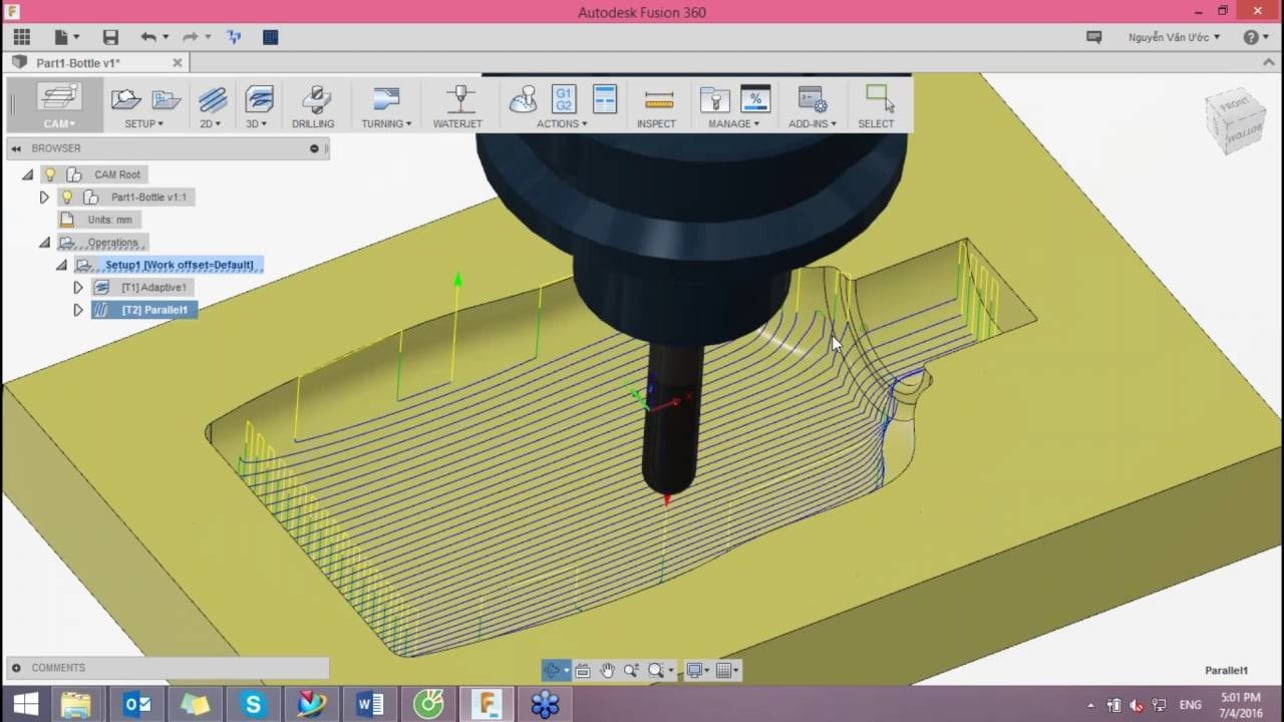

#FUSION 360 CAD CAM CNC CODE#
In Week 4, we’ll combine all the knowledge so far to set up, program, and output G code for a complex part.From simply cleaning up vertical walls to using micro motions to get the perfect finish we’ll explore them all. Unlike rest machining roughed in geometry, finish toolpaths are used to create the final surfaces we see on finished parts. There are lots of videos on YouTube but a good (and entertaining) place to get started is Evan and Katelyn’s Fusion 360 CAM tutorial for CNC beginners video.
#FUSION 360 CAD CAM CNC HOW TO#
#FUSION 360 CAD CAM CNC FULL#
We’ll wrap up this course by creating a full CNC program for a part, simulating it, and exporting it to G-code.

In this course, we explore how to rough and finish geometry that requires tool motion in X, Y, and Z simultaneously, learning how to finish even the finest of details. The skills in this course will help you apply design and engineering concepts and practice real-world scenarios that you may encounter in the design process.As our machining geometry gets more complicated, Autodesk® Fusion 360™ is up to the task! With a host of standard and adaptive toolpaths we can rapidly remove material from even the most complicated 3d parts. We’ll then step through the inspection process to ensure accuracy in our design.Īt the end of the course, you’ll take a course assessment that demonstrates your expertise and shows you where you might need more practice. Once we’ve reviewed manufacturing best practices, we’ll overview of the CNC setup and machining for a cell phone case. Step-by step video tutorials guide you through the process from sketch to documentation. We’ll then use Fusion 360 CAM to set up and program the cell phone case CAD model for successful manufacture.

Each lesson includes comprehensive lecture presentations and project exercises that include step-by-step video instruction, project resources and datasets, and a final course assessment.Īt the beginning of the course, we’ll apply design for manufacturing principles to design a cell phone case. This course consists of 10 sections that include lectures and hands-on exercises using Fusion 360. Simulate the programmed toolpaths for each set-up.Place 2D projected views into a drawing.Generate a rendered image locally and in the project.Experiment with editing a T-Spline body.You then compete in a design challenge with your class using the provided criteria.Īfter completing this course, students will:

Your goal is to make the case as lightweight as possible and to tool a functional and artistic surface effect.Īs a second challenge, you can design a personal cell-phone case cut from aluminum with added features and functionality. Materials must be appropriate to use and ecologically friendly.Īluminum T 6061-T6 is your desired material. Your target market is 18-to 30-year-olds. In this course, you design and market a unique cell-phone case.


 0 kommentar(er)
0 kommentar(er)
